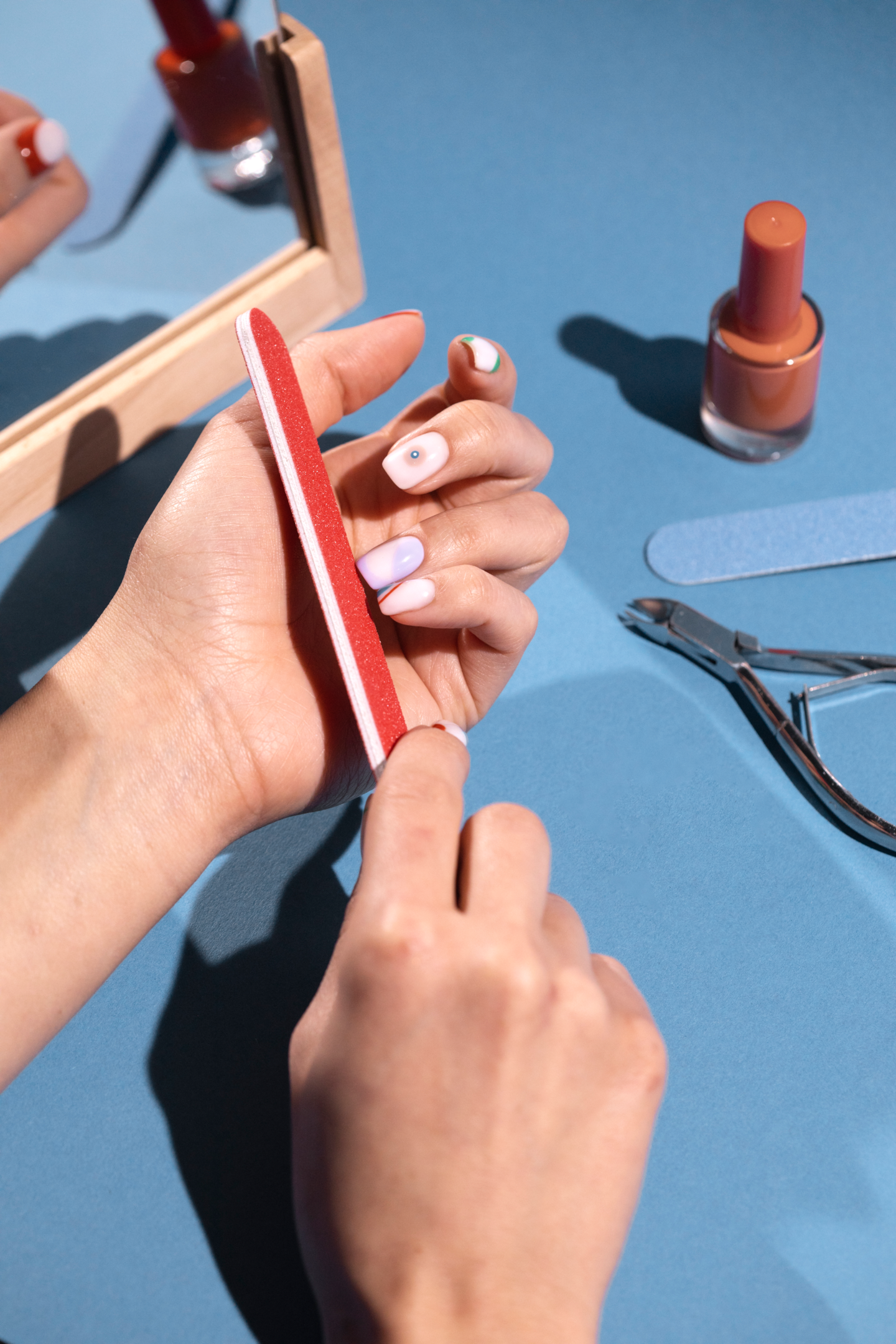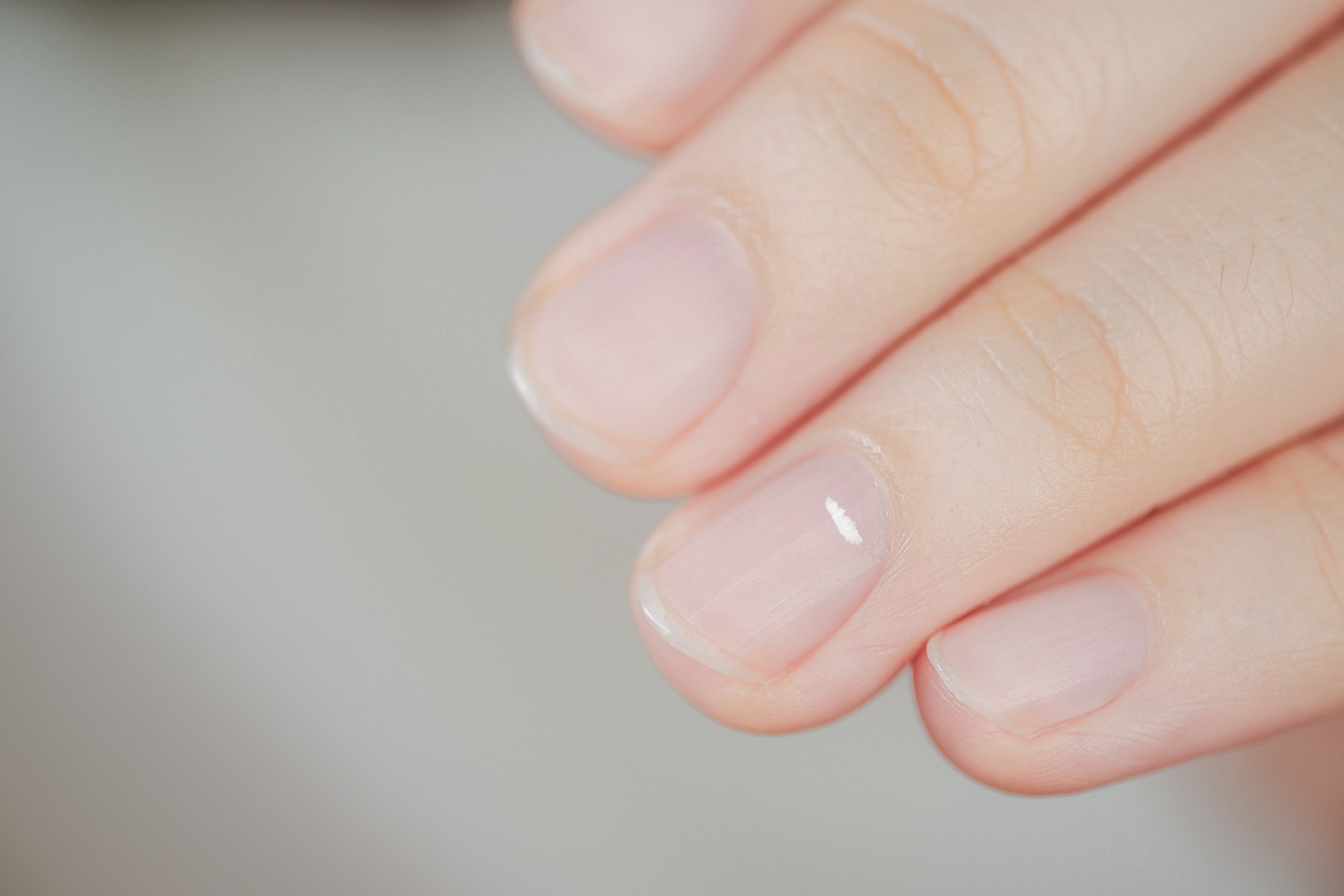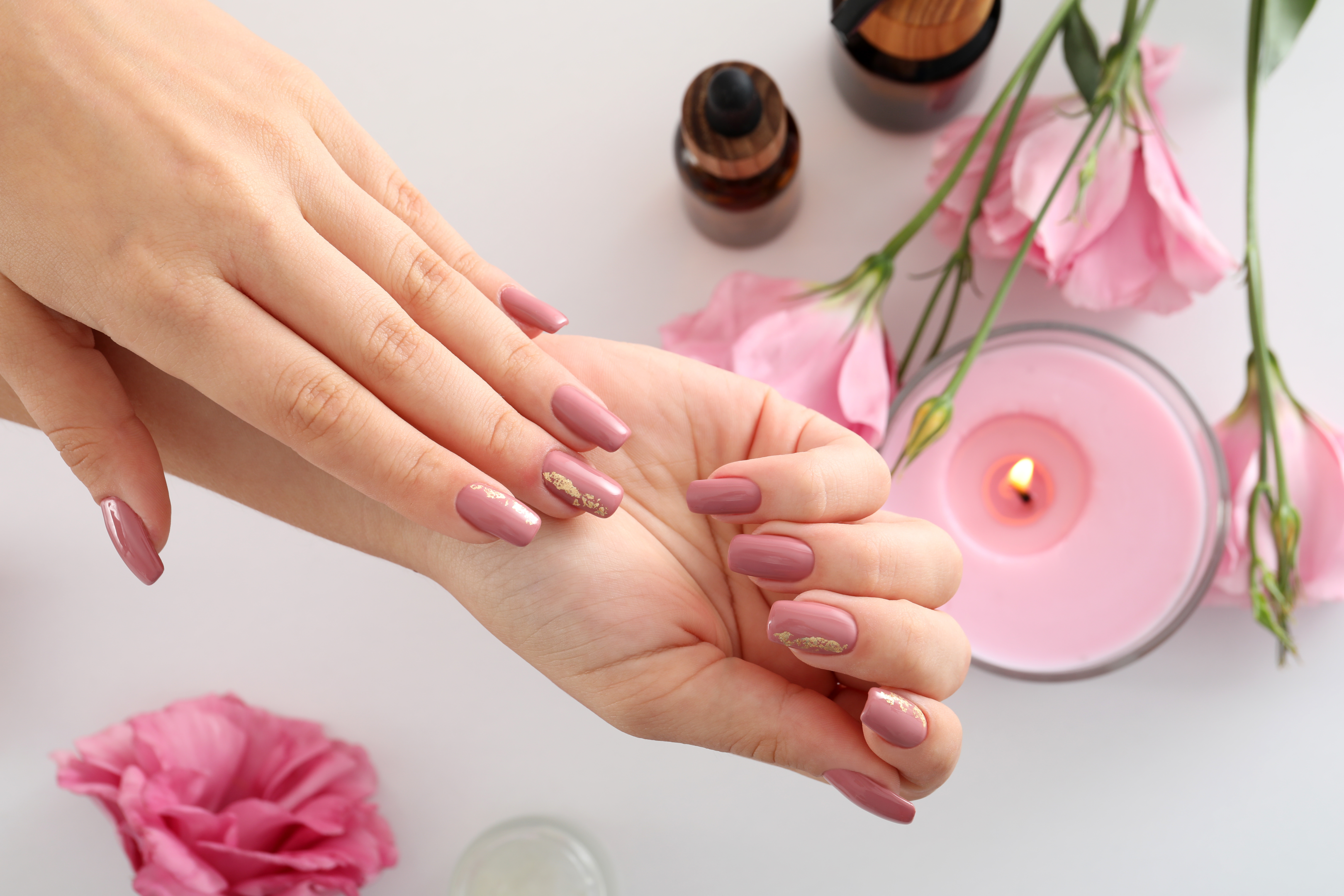
 Instagram
Instagram
Does kidney disease affect nails?

Related products
Chronic kidney disease (CKD) also results in various nail disorders and abnormalities.

Chronic kidney disease (abbreviated as CKD) affects many British people, and according to Public Health England, more than 3 million British people have CKD. The prevalence is higher in women than in men and is expected to increase.
CKD and nail changes
The most important thing about CKD is that a person may be totally unaware of it before it is too late. Amongst other signs, the changes in the fingernails can also be noticeable and often precede the other symptoms. Changes in the fingernails' shape, texture and colour can be noticeable. Besides kidney functions, these changes can also indicate other diseases.
How do kidney diseases impact the nails? What types of changes can be noted, and what should you do? Let's have an overview.
The relationship between kidney disease and nail health
To understand the association of kidneys with the nails, we have to look into the physiological functions of the kidneys. Kidneys have some essential functions that are compromised when you have renal diseases. These are;
Kidneys can't remove toxic wastes
One of the most important functions of kidneys is to eliminate waste products from the body. They do this by filtering your blood. This function will be compromised whenever you develop chronic renal failure or issues with your blood circulation.

The elimination of waste products, e.g., creatinine, BUN, urea etc., will not occur. These substances will gradually build up in the blood and other body compartments, causing various changes in the body's organs. The accumulation of nitrogenous wastes in the nails will cause changes in their colour, texture and shape.
Kidney-friendly diets pose a risk of nutritional deficiencies
Nutritional deficiencies can occur when kidney patients are asked to take specific diets deficient in minerals and proteins. Kidney patients are often recommended to take diets low in sodium, phosphorus and potassium. These nutrients are essential for keratin production, the protein that strengthens your hair and nails. The nail plate is mainly made of keratin.
You can develop an imbalance of salts and water
The kidneys also control the balance of salts and water inside the body, which is necessary to make nails healthy. A disruption of this balance can also cause nail disorders. The kidneys have many more bodily functions, which are very important for your overall health.
Read more: What is the function of the kidney?
There will be an increased risk of other diseases
The nails will lose their beauty and texture if you have kidney disease. The degradation of keratin and unusual colouration due to kidney diseases can also increase the risk of other infections. The nail growth will be curtailed, causing an asymmetrical shape.
An earlier study published in the Journal of the European Academy of Dermatology and Venereology in 2007 noted that 60.3% of patients with chronic renal failure and receiving the treatment have at least a single type of nail disease.
Let's now discuss the significant changes which can occur in nails in response to CKD.
What type of changes can occur in nails?
Various changes in the nails are noted. These changes, however, occur at the end stage of kidney disease, and emergency intervention is required to save your life. The changes to be noted in the nails are;
Concave nails
A spoon-shaped concave nail scooped out from mid reflects the nail softening. The medical term for this condition is koilonychia (spoon nails). This abnormal curvature of the nails could also reflect iron deficiency, which is commonplace in people with kidney diseases.

Other conditions responsible for koilonychia are iron overload (hemochromatosis), lupus, psoriasis, diabetes, hypothyroidism, iron deficiency anaemia, malnutrition, worms, blood loss, cancer, celiac disease etc. It is one of the less common nail disorders, and a study published in the Journal of Dermatology Research and Therapy in 2016 noted that 7.1% of chronic renal failure (CKF) patients experience this condition.
White streaks on nails
Observing white bands or streaks on the nails is very common. These bands or lines appear in various shapes and forms and are known as Muehrcke's lines, named after the person who described them. These lines can form due to several causes, e.g., injuries to the nail bed, disruption of vascular supply to the nail etc.
Read more: Are white spots on nails a sign of vitamin deficiency?
A single spot or line may not be so alarming, but many lines on multiple nails should be viewed with suspicion, and you should consult the doctor. These lines could also be due to hypoalbuminemia (low albumin in the blood), a common complication of end-stage renal diseases. An albumin blood test can be helpful for diagnosis.

It is a less common sign of chronic kidney disease and has almost the same incidence rate as koilonychia. A similar condition is leukonychia, in which white lines of variable size and length are formed on the nails. This nail disorder is more common, and the same study noted that it is experienced by 48.2% of people with CRF.
Brittleness of nails
The nails are made of keratin, and a delicate balance of minerals, e.g., iron, calcium and zinc, maintains its elasticity. The loss of this balance will cause the nails to become flaky, crumbled, split, soft and less elastic. The nails break more than usual. As kidneys maintain mineral levels, CRF can also lead to this situation.
Kidney diseases will also result in compromised integrity and quality of the nails. The nails often become ridged, brittle, and prone to breakage, even with minor injuries. The brittle nails could also be due to lower keratin production, which is also common in renal patients on a kidney-friendly diet. Consult your doctor to change the renal diet if possible if you take nail health too seriously.
Yellowing of nails
The yellow or opaque colouring of nails is often not noticed at the initial phase when the spot is too small. When noted, it could be localized to a small part of the nail plate or all of the nails can become involved. The accumulation of nitrogenous wastes due to CKD could also be a cause, along with other conditions, e.g., injuries and jaundice (yellowness of skin under the nails).
Yellow nail syndrome is a related but more severe condition. It is due to dystrophic and slow-growing nails, respiratory issues and lymphatic diseases. The situation is more common in older people above 50, although cases are also reported in young children. Other possible causes are immunodeficiency syndrome, rheumatoid arthritis, thyroid diseases and cancer.

A good practice is to regularly monitor the levels of these wastes in the blood to detect the dangerous build-up at the initial stages. Creatinine blood tests and the detection of blood urea nitrogen levels are beneficial.
To measure your creatinine levels, order the Welzo Kidney Blood Test here.
Detachment of nails
Chronic kidney diseases and failure can also cause your nails to get separated from the underlying skin, a situation known as onycholysis. The most common cause of this condition is the fungal infection of the nails, known as onychomycosis. Onychomycosis is relatively common and is experienced by as much as 14% of the general population. However, the injury or infection of the nails can also be a cause.
The phenomenon could be partial or complete. In some cases, the nail's or underlying skin's vulnerable parts could be exposed, increasing the risk of infections and further aggravating the onycholysis process. A study published in the Journal of Dermatology Research and Therapy in 2016 noted that 71.4% of chronic renal failure patients (CRF) experience this condition, making it one of the most common nail abnormalities due to CRF.
Lindsay's nails
This condition is also known as half and half nails. In this condition, the lower half of the nail plate is coloured white, while the upper half becomes brown-red. The exact cause is unknown, but the brown-coloured band is thought to be due to the increase in the concentration of β-melanocyte–stimulating hormone, a hormone produced by the pituitary gland.
This hormone is involved in the production of melanin, a brown pigment. The disruption of renal function has a role. A study published in the Journal of General Internal Medicine in 2016 noted that this condition is present in as many as 40% of patients with chronic kidney disease.

Acidosis (caused by inadequate glomerular filtration by kidneys) or uraemia (the build-up of toxins in the blood) are also among the causes. This condition affects the toenails more than the fingernails. The people undergoing dialysis will still have these lines, but renal transplant recipients often experience improvement.
Beau's lines
It is the deep depression or dent which appears horizontally on the toenails or fingernails, resulting in de-shaped and pitted nails. These lines are named after Joseph Beau, the person who described these lines for the first time. These lines are caused mainly by a temporary disruption in the growth of the proximal nail matrix during the growing phase.
The average growth of nails should be smooth. However, this smooth process is sometimes disturbed, and a linear groove can form anywhere on the plate. Acute kidney diseases could be among the causes. A study published in the Journal of Dermatology Research and Therapy in 2016 noted that 37.4% of chronic renal failure (CRF) patients experience this condition.
What should you do in case of these changes?
Nail health is an essential part of cosmetic beauty, particularly for women. Since several factors are involved, your first job should be to identify the changes and consult the doctor to determine the causes. If kidney disease is suspected, diagnostic tests can help you to confirm.
If you are on dialysis and experiencing these changes, inform your doctor, as some changes in the mode of dialysis may help. The doctor may ask you to undergo blood tests to explore your hormone, mineral and lipid profile thoroughly. For most patients, the changes are temporary and are reversible when the cause is removed. There are, however, some tips that can help you immensely e.g.,
-
Don't use chemicals and colouring on your nails, as they will add further stress to them.
-
Avoid scratching the nails with teeth or other instruments, as the sensitive nail plate can break, exposing the underlying soft tissues to infections.
-
Use mild to moderate chemicals to mask broken or discoloured nails if you are worried about your cosmetic beauty.
-
Take a well-balanced diet having adequate vitamins and minerals
-
Take the renal vitamins as prescribed by the doctor
-
Eat plenty of fresh water to keep yourself hydrated and also keep your kidneys healthy
What are renal vitamins?
People having CKD are at extremely high risk of developing a deficiency of B vitamins, vitamin D, iron, calcium and zinc. The patients are prescribed vitamin supplements to prevent and treat these deficiencies, particularly those undergoing dialysis. Similarly, the levels of iron and calcium are also checked routinely, and dietary supplements are prescribed if and when needed.
Sometimes, dietary deficiencies also result from the medicines used for kidney diseases. However, consulting the doctor could only change or stop these medicines. You can ask the doctor for these changes if the changes in your nails and hair are apparent. Changes in the modality of dialysis can also result in changes in nails and hair.
To measure your vitamin levels, order a Welzo Vitamin Deficiency Test here.
Is there any other disease which influences the nails?
The kidneys are not only to be blamed for changes in nail health. Besides renal insufficiency, many issues can cause issues with your nails, e.g., inflammatory bowel disease (IBD), lung diseases, heart diseases, liver diseases, thyroid diseases, diabetes, psoriasis, Reiter's syndrome, etc.
Whenever you note any changes in your nails, inform your doctor, who will initiate proper treatment after diagnosis.
Fungal infections are among the most notable reasons for damage to your nails. We have a lot of treatment options available for fungal nail infections. Click here to explore and choose your desired treatment.
When should you see the doctor?
Kidney disease can be related to nail condition, however, nail changes are not enough to diagnose the disease and its severity. Severe changes in the nails' form, texture and shape should be consulted with the doctor.

Also, look for the other signs of kidney diseases, e.g., insomnia, blood, pus or odour in the urine, muscle cramps, irregular urination, breadth shortness etc. If these signs also accompany the nail issues, consult the doctor immediately for diagnosis and treatment.
Kidney disease is seldom noted earlier, and the appearance of clinical signs means the condition has already advanced too far. Therefore, monitoring your kidney health at least once a year is a good practice.
Bottom-line
Kidney diseases have strong influences on your overall physiology. Chronic kidney disease also induces changes in the shape, form and appearance of nails. Some so-called 'kidney failure lines' are due to kidney issues, while the other changes may be due to other problems, e.g., injuries etc.
A thorough understanding of the correlation of kidney health with nails will allow you to spot kidney problems for better diagnosis and treatment.

Our Kidney Blood Test is a valuable product for monitoring kidney health regularly. It is a comprehensive product that can help the physician assess the overall health of your kidneys. It monitors essential parameters, e.g., sodium, urea, and creatinine and also estimates the glomerular filtration rate. Click here to learn more and get your test kit.
Our Uric Acid Blood Test is a diagnostic test that assesses the health of the kidney through uric acid levels in the blood. Uric acid is one of the nitrogenous waste products excreted by the kidneys, and its high levels reflect renal insufficiency. Click here for more information and place your order.
You can't handle all of your health-related issues by yourself and may need the help of healthcare professionals. Our Welzo team is available for you. Click here for online consultation.



















 Rated Excellent by 14,617+ Reviews
Rated Excellent by 14,617+ Reviews